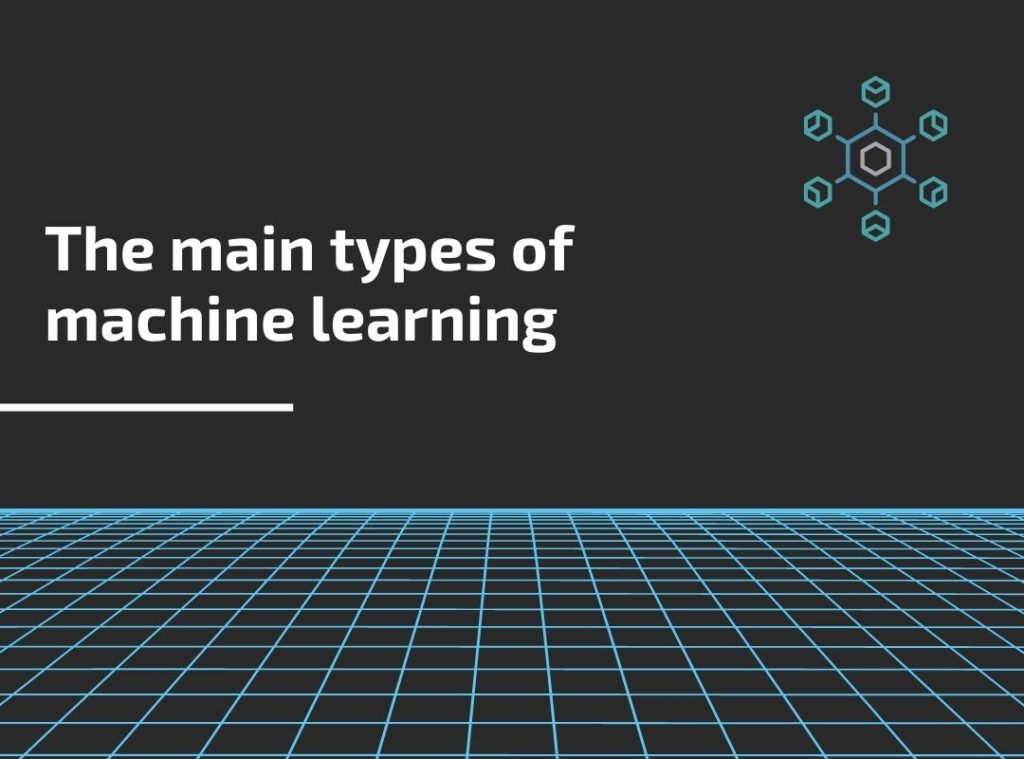What are the types of machine learning?
Machine learning. If it weren’t, we would have a lot more boring Netflix or Facebook, we wouldn’t have social robots and we certainly wouldn’t even dream of self-driving cars. During machine learning, programs and algorithms learn and develop their skills independently from data. In this blog, I present to you the 3 main types of machine learning.

If you’re wondering what we can do thanks to machine learning, you might want to read our previous article:
In the following, I present to you the 3 main types of machine learning.
Supervised learning
At this type of machine learning, the data is organized into label-example pairs.
The task of the algorithm is to learn to label the given topics and it gets feedback on the result.
With some practice, the algorithm will be able to properly label examples and data that it has never seen before.
It is also called task-driven machine learning because it is always used to perform a specific task.
In what areas can this type of machine learning be useful?
Testing marketing contents
Online marketing is also an area that has already benefited a lot from artificial intelligence.
How can such an algorithm help advertisers? It is able to select contents that will perform better.
Spam filter
The spam filter used in emails also learns what counts as spam in this way.
For a better user experience, many systems provide custom labels for the users.
Face recognition
Facebook face recognition works on the same principle. It matches faces found in uploaded images to user accounts.
Face recognition is used not only on social network platforms but also in robotics. Moreover, Softbank Robotics has already developed an algorithm for Pepper robot that can determine if a conversation partner is wearing a mask.
Now let’s get to know another main type of machine learning as well!
Unsupervised learning
Data is not tagged or grouped. The algorithm has tools to recognize the essential properties of the dataset. It is also able to organize them.
Huge amounts of data that is available in the world are unstructured. Therefore, the use of such algorithms is preferred.
Where can it be used?
One of my favourite examples is segmentation based on buying habits.
As we shop online, our data is entered into a database where the algorithms organize it and classify each customer into different consumer segments, i.e. homogeneous groups based on shopping habits.
Another excellent example of this is the Netflix movie reviewer. I’m an extremely big fan of this service, and I enjoy not having to search – I would probably have a very hard time finding the movies I’m interested in in the wide selection.
Netflix also collects data and is able to group users with similar interests. It compares users based on the movies they watch. If a similar user has watched a movie that I haven’t yet, this will be offered to me by the system. It assumes I might be interested in this movie as well.
Reinforcement learning
Reinforcement learning is often explained as “behaviour-driven”. In one article, Hunter Heidenreich referred to it as “learning from mistakes.”
In the case of reinforcement learning, the algorithm is started to be trained in some specific environment. At first, the algorithm makes a lot of mistakes. It will receive a negative signal in case of an error and a positive signal in case of a good result. In this way, it is able to evolve, learn from the mistakes it has made, and become more and more accurate.
With such an algorithm, Google was able to balance the power consumption of the data centres. The algorithm can optimize energy consumption. This imposes much lower data storage costs on users.
Summary
Machine learning projects can be divided into 3 main types.
Supervised learning: the training dataset is tagged, but the algorithm has to predict a label for each piece. It receives feedback if a piece of data has been tagged well. After enough practice, the system will be able to label data it has never seen before correctly.
Unsupervised learning: unstructured data, but the algorithm has tools to recognize the main features of the data. It organizes them based on this.
Reinforcement learning: the system learns from mistakes. At first, he makes a lot of mistakes, he gets negative feedback about it. After enough practice, it becomes more and more accurate.
Thanks to machine learning, for example, we have a Netflix movie recommendation or a Facebook feed that throws us relevant content based on our activities.
We also use supervised machine learning in the development of Pepper’s robot face recognition. The goal here is for the robot to correctly recognize the interlocutor, even on the basis of an ID card.
https://towardsdatascience.com/what-are-the-types-of-machine-learning-e2b9e5d1756f
https://azure.microsoft.com/hu-hu/overview/what-is-machine-learning-platform/#techniques
